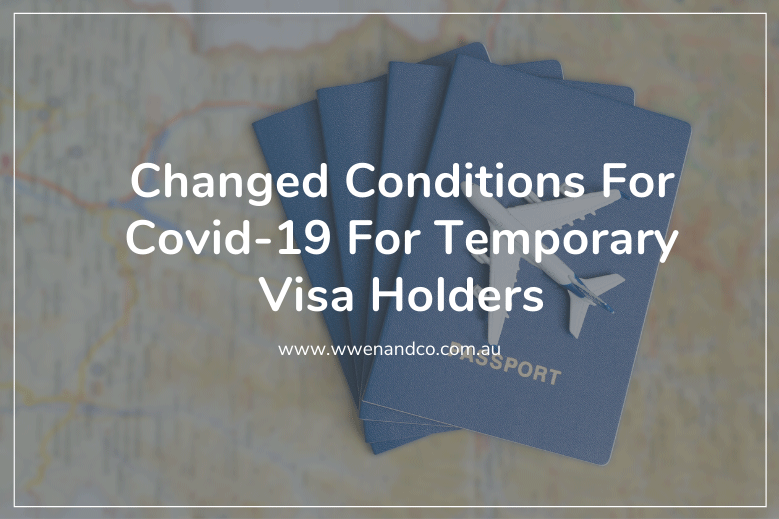
The government has made a number of changes to temporary visa holder arrangements during the COVID-19 crisis. The Department of Home Affairs says these measures have been made to protect the health and livelihoods of Australians, to support critical industries, and to boost recovery afterwards.
Home Affairs records show that there are 2.17 million temporary visa holders in Australia. This includes about 8,000 medical professionals, who are most welcome right now.
While citizens, permanent residents and many New Zealanders have access to unconditional work rights and government payments (including the new JobKeeper and JobSeeker payments), temporary visa holders do not.
The changes announced by the government will, it says, help facilitate self sufficiency for those who may be stood down or lose work hours as a result of COVID-19.
In line with changes being made for Australian citizens and permanent residents, most temporary visa holders with work rights will now be able to access their Australian superannuation to help support themselves during this crisis.
Visa changes
The following measures apply to the major classes of temporary visa holders. Home Affairs says the situation will be reviewed periodically and further changes made if required
- Temporary Skilled Visa Holder
There are around 139,000 temporary skilled visa holders, on either a two or four year visa, provided to fill a skills shortage. This may indeed be a shortage that will still exist when the crisis has passed.
Consequently, those visa holders who have been stood down, but not laid off, will maintain their visa validity and businesses will have the opportunity to extend their visa as per normal arrangements. Businesses will also be able to reduce the hours of the visa holder without the person being in breach of their visa conditions.
These visa holders will also be able to access up to $10,000 of their superannuation this financial year.
Those visa holders who have been laid off due to coronavirus and have been unable to secure a new sponsor are required to leave the country in line with existing visa conditions. However, should a four-year visa holder be re-employed after the COVID-19 pandemic, their time already spent in Australia will count towards their permanent residency skilled work experience requirements.
- Working Holiday Makers
There are about 118,000 people in Australia on a Working Holiday visa (or “backpacker” visa) – an arrangement that provides conditional work rights.
To support the critical sectors of heath, aged and disability care, agriculture and food processing, and childcare, some limited flexibility will be provided. In particular, working holiday makers who are working in these critical sectors will be exempt from the six month work limitation with the one employer, and eligible for a further visa to keep working in these critical sectors if their current visa is due to expire in the next six months.
In general, working holiday makers who are not confident of being able to sustain themselves over the next six months are encouraged by the government to make arrangements to leave the country.
- International students
Home Affairs says there are 565,000 international students in Australia, mainly studying in the higher education or vocational education sector.
Students are encouraged to rely on family support, part-time work where available, and their own savings to sustain themselves in Australia. As part of their visa application, international students have had to demonstrate that they can support themselves completely in their first year. International students are able to work up to 40 hours per fortnight. Those working in aged care and as nurses have had the 40 hours extended to support these critical sectors.
International students working in the major supermarkets have also had these hours extended to help get stock on shelves during the high demand. From 1 May, their hours will return to the maximum 40 hours a fortnight as more Australians are being recruited into these roles.
Students who have been here longer than 12 months who find themselves in financial hardship will be able to access their Australian superannuation. The government says it will also be flexible in cases where COVID-19 has prevented international students meeting their visa conditions (such as not being able attend classes).
There are another 185,000 other temporary visa holders in Australia, about half of them temporary graduate visa holders. They will also be able to access their Australian superannuation if needed for support.
- New Zealanders on 444 visas
New Zealanders and Australians have reciprocal arrangements whereby each can stay and work in the other country. There are more than 672,000 New Zealanders in Australia on a subclass 444 visa.
New Zealanders on 444 visas who arrived before 26 February 2001 will have access to welfare payments and the JobKeeper payment. Those who arrived after 2001 have access to the JobKeeper payment, and those who have lived in Australia for 10 years or more have access to JobSeeker payments for six months.
- Visitor visa holders
There are 203,000 international visitors in Australia, typically on a visa lasting three months or less. International tourists are encouraged to return to their home country.

